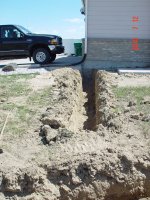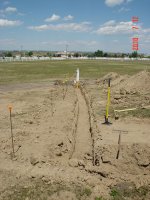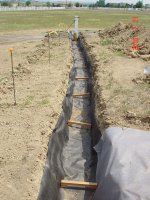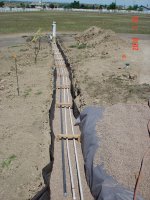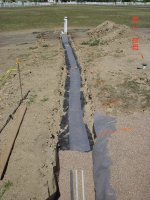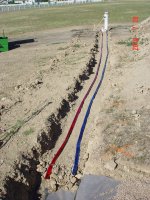bcarwell
Gold Member
I need a quick solution to getting water out about 1000 feet to a cattle trough until I have time to trench and lay pvc.
One thing I'm considering is a couple rolls of 1 inch black polypipe along the fenceline for a couple months until I can get at the trenching.
The questions are: 1) could I bury and thus re-use the polypipe in the trench if I wanted to instead of pvc and get some reasonable useful lifetime out of it (I'm in Central Texas where it usually only freezes down 12 inches a few times) and 2) how does polypipe hold up against the sun and UV (would there be any significant deterioration by being exposed to full sun in the pasture along the fence line for 3 months or so ?) Also could I hope to get it sold for maybe 50% of what I paid for it if I opt for the pvc as the permanent solution after 3 months or so ?
Thanks for any answers.
Bob
One thing I'm considering is a couple rolls of 1 inch black polypipe along the fenceline for a couple months until I can get at the trenching.
The questions are: 1) could I bury and thus re-use the polypipe in the trench if I wanted to instead of pvc and get some reasonable useful lifetime out of it (I'm in Central Texas where it usually only freezes down 12 inches a few times) and 2) how does polypipe hold up against the sun and UV (would there be any significant deterioration by being exposed to full sun in the pasture along the fence line for 3 months or so ?) Also could I hope to get it sold for maybe 50% of what I paid for it if I opt for the pvc as the permanent solution after 3 months or so ?
Thanks for any answers.
Bob
